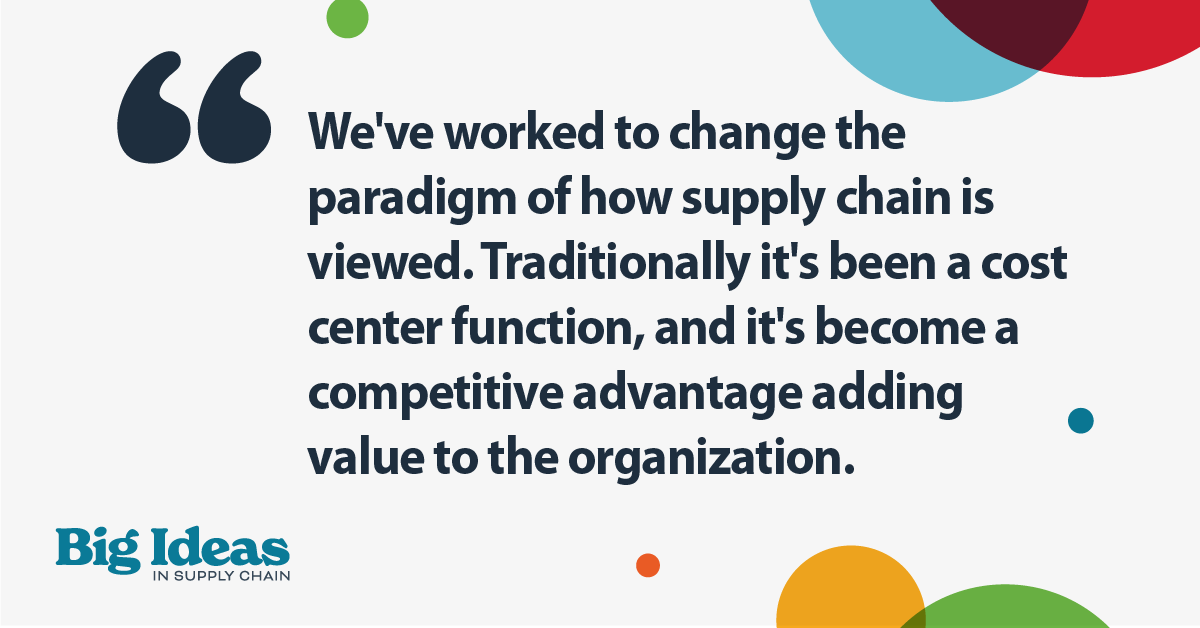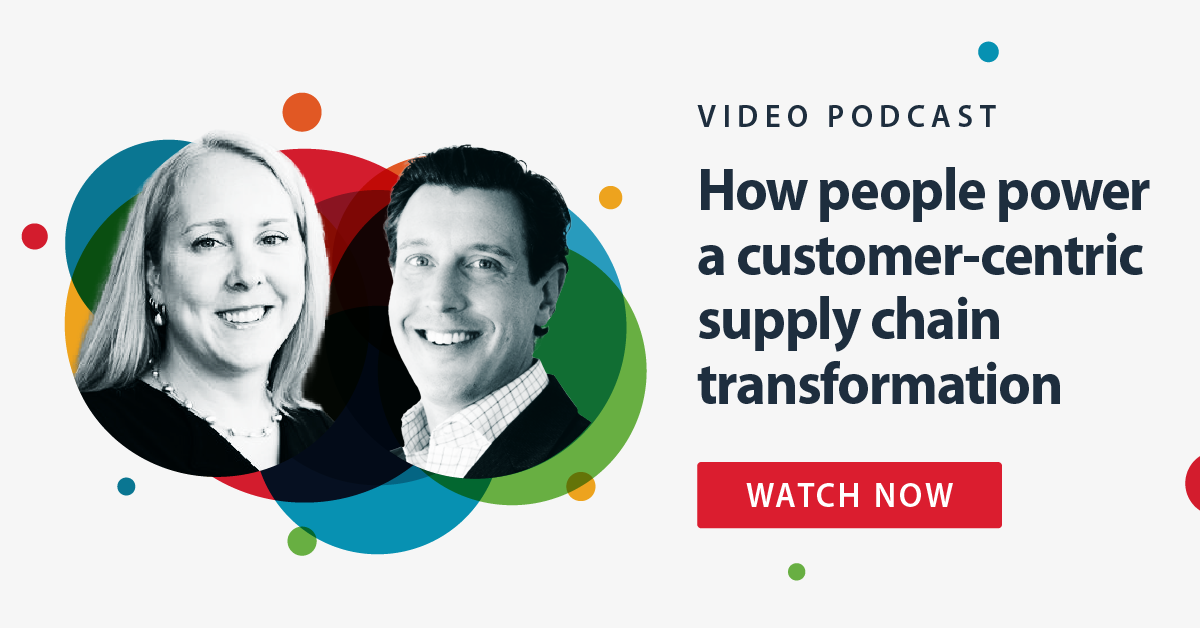Supply chain professionals are in the business of problem-solving. During the pandemic, agile supply chain planning helped companies pivot to handle disruptions and demand challenges to navigate closer toward a new version of “normal” operations. Organizations began to view the supply chain as more than a cost center, but rather a key strategic factor to compete and thrive in a fluctuating global market.
At Rogers Communications, a telecommunications provider in Canada, the supply chain organization found itself in this position to drive competitive advantage for the company following the pandemic. To leverage strategic value to its full potential, the company looked to the human element – the people behind the supply chain, as well as the end customer.
In our latest Big Ideas in Supply Chain podcast, Anne Robinson, Chief Strategy Officer of Kinaxis, sat down with then-VP, Supply Chain of Rogers, Paul Giamberardino to discuss how the supply chain team handled new planning processes and focus to ultimately deliver exceptional value to the customer. We’ve gathered some key points here, but we invite you to check out the episode to watch the conversation through the link below.
Leveraging supply chain “like never before”
Paul, who began his career with an engineering background, has over 20 years of experience in supply chain management for industries like consumer-packaged goods, healthcare and now telecommunications. He says he’s learned from strong leaders and teams how much impact supply chain has on the end customer.
In recent years, he says it’s been “rewarding” to witness and be a part of the work to change the paradigm about how supply chain is viewed. As he put it, supply chain is no longer just “a cost center to move equipment around” but “we've really tried to change that to be a competitive advantage, an area that adds value for the organization,” he says.
His team adds value through the “5 Cs” that drive their goals and objectives:
- Customer experience
- Capabilities
- Compliance (“a safe and secure supply chain”)
- Cost improvement
- Culture
By articulating these values to the organization, Paul says it has “enabled new investment, new capabilities, a real way to leverage the supply chain like never before at Rogers.” This was especially important because the pandemic changed the paradigm of how the company interacted with customers. During lockdown, technicians could no longer deliver equipment to people’s homes which meant the supply chain team began working directly with customers and giving rise to a renewed focus on the customer experience as a competitive advantage.

Keeping people at the heart of a technology transformation
When it comes to new technologies, Paul says whether it's IoT, Blockchain or 5G, the important thing is they're going to enable supply chain practitioners to get better at what they do. He is certain that today’s advanced planning platforms will help supply chain move past pure execution of orders to a more end-to-end orchestration of how things move through the supply chain, breaking down silos along the way.
However, the most important piece of any journey toward smarter supply chain planning is the human element. Developing new skills and mindsets in the supply chain organization has been “the biggest lift,” says Paul. The supply chain team needed to handle change management and had to build trust in new tools. This was a challenge, says Paul, because people were used to ingrained ways of doing things and now had to trust the new systems will deliver the outcomes they’re used to. Getting buy-in along the journey is important, so Paul recommends leaders build excitement, and make sure there’s a “willingness to embrace it…and an eagerness to learn.” Because, “it's often not about the systems, but more so the people and the processes that go with it.”
Like many organizations, one challenge at Rogers post-pandemic is transitioning from a remote workforce back to more on-site connections. At Rogers, the supply chain organization currently has a mix of office and logistics/distribution employees. “We’ve gotten away from touching and feeling the supply chain like we used to.” Paul explains there was a clear need to bring the organization back together after so many worked from home for so long, with no substitute for seeing the operations first-hand and through the lens of the customer. In his opinion, that “last touch” when the customer receives the good service is a make-or-break moment, especially as customer expectations continue to rise.
Evolution of supply chain becoming a strategic differentiator
To better meet and exceed customer’s expectations, Rogers has introduced new services like deliveries seven days a week, including weekends. It took a lot of work with delivery partners and operations to get to this point. But it’s an example of a competitive advantage the supply chain team brought to the business; by articulating that up to the executive level, they’ve been able to drive more investment in things like talent, systems and facilities. “There's no doubt that having a well-operating supply chain is critical for any organization in today's environment,” says Paul. “It’s certainly has been a fun time to be in the trade.”
Watch the full video podcast here, or to catch up on other episodes of our Big Ideas in Supply Chain podcast, click here.
Additional Resources
- Concurrent planning frequently asked questions
- Supply chain management frequently asked questions
- Supply chain planning frequently asked questions
- Supply chain transformation frequently asked questions
- Supply planning frequently asked questions






